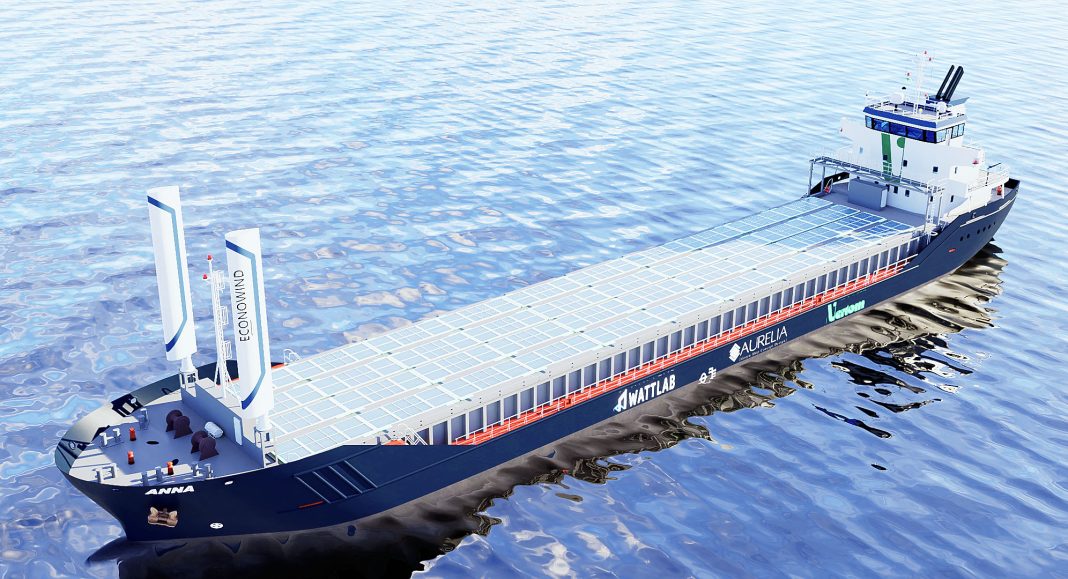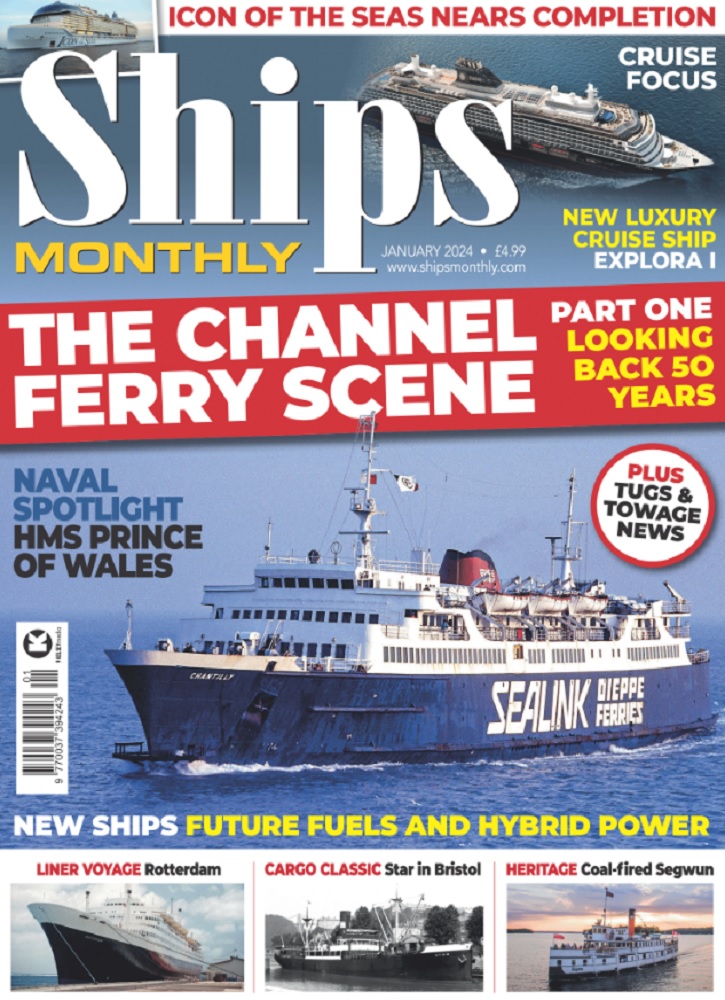On 22 June 2023 RINA awarded an Approval in Principle (AiP) for a green retrofit package solution designed by the innovative naval architecture designer, Aurelia, in partnership with Econowind, Wattlab and Vertom. Using a series of innovative solutions, the retrofit design meets CO2 reduction targets in compliance with CII and speeds the path to decarbonisation for the shipping industry.
Aurelia’s retrofit package solution can be applied to almost any kind of vessel, whatever their purpose or cargo. It does not interfere with operational aspects, such as loading and offloading cargo.
The solution incorporates rigid sails, solar panels, batteries, optimised weather-routing, and a smart decision support system developed by Hydrographic and Marine Consultants (HMC)to dramatically reduce emissions of an existing Newcastlemax bulk carrier.
Working with sails experts Econowind, and leaders in PV technology, Wattlab, and AURELIA has shown that big steps towards decarbonisation can be achieved today with practical, viable solutions for the marine industry.
For the Newcastlemax bulk carrier, the challenge was to meet EEXI and the CII index for the reduction of CO2 emissions. The 203,000dwt bulk carrier has a length of 300m, a beam of 50m and a range of 24,500 nautical miles.
Aurelia developed a CII calculator used to assess the status of the vessel and give an overview of what was needed to comply with the CII index based on five annual sailings between Brazil and China.
The resulting solution proposes two investment steps for shipowners looking to comply with the CII index. The first, to be done in 2023, involves the installation of Solar Flatrack technology, batteries, and the SafePlan software developed by HMC.
The combination of such technologies will aim to reduce the hours in service of the auxiliary engines. Any surplus energy not consumed by the vessel is used to charge the battery bank. This first stage of the retrofit of the auxiliary engine, reduces the total CO2 emissions by 6.1%, or 3305 tons, and MGO fuel of the auxiliary engine by 97.5%.
The second stage of investment, required by 2025, includes the installation of six rigid, 30m high sails to provide supporting wind propulsion, along with switching from fossil to biofuels.
The added wind propulsion provides power to the vessel and lowers the load of the main engine (2T), thereby reducing fuel consumption and was shown to reach 1237 kW at 67% operation per day.
With the use of biofuels to further lower emissions, this investment stage reduces CO2 emissions by 10.3% or 5560 tons of CO2 per year.


